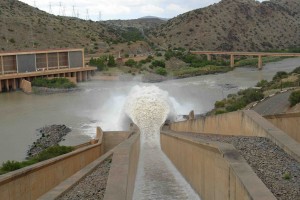Earth Day is always a stark reminder of the fact that we should be doing more to conserve resources. Khululiwe Mabaso, CSI Associate Director for Sub-Saharan Africa at Procter & Gamble, shares some practical tips on how to make sustainability a daily habit at your company, rather than just a once-a-year effort.
1. Paper < cut – Perhaps the simplest way to start making climate-wise changes in the office is to reduce paper usage. The Environmental Protection Agency in the US has found that the average worker uses 10,000 sheets of paper a year. Research has also shown that 30% of jobs printed are not collected. In this digital age, the need to print numerous documents daily has waned. Encourage your colleagues to think twice about pressing the ‘Print’ button and change the default settings on the office printers to print only in black and white and on both sides of the page. Buy recycled paper and consider using spare paper as notepads.
2. Responsible recycling – Another quick win is to start recycling. It is estimated that an office of 100 people produces, on average, 20 bags of waste weekly. This fills one 1,100L waste bin every five days. But 90% of this waste can be recycled. Set up recycling stations around the office and encourage colleagues to think before they throw away. You can even gradually work towards removing individual bins at desks.
 3. Ditch the disposables – Do away with paper cups, plastic plates and cutlery, and invest in crockery that can be reused many times over. This is especially important to consider if you have an office canteen, as takeaway boxes are a big waste.
3. Ditch the disposables – Do away with paper cups, plastic plates and cutlery, and invest in crockery that can be reused many times over. This is especially important to consider if you have an office canteen, as takeaway boxes are a big waste.
4. Light it up – Lighting usually accounts for about 20% to 30% of a company’s carbon footprint. Reduce your office electricity costs by investing in energy-efficient lighting such as LEDs or compact fluorescent lights. Most importantly, turn the lights off when they are not needed, i.e. when a room is unoccupied or at night. You can also invest in motion sensors. In offices where there is a lot of sunlight, avoid using unnecessary lighting during the day.
5. Roadtrip – Encourage colleagues who have their own cars to consider carpooling. With petrol prices on the rise, saving money can be a significant motivator. You may also consider providing incentives for colleagues who car pool. For every 100 km not driven, 28 kg of CO2 emissions is saved. Even simple measures such as correctly inflating your car tyres can increase fuel efficiency by up to 25%.
 6. Drip, drip, drip – South Africans have become very cognisant of water usage in the past few months, as drought continues to plague much of the country. Low-flow basins and toilets and motion sensors on taps are ideal to conserve this precious resource, but you can begin with simple changes. Rainwater harvesting is an ideal solution to looking after office gardens and greywater recycling for toilets can also be considered.
6. Drip, drip, drip – South Africans have become very cognisant of water usage in the past few months, as drought continues to plague much of the country. Low-flow basins and toilets and motion sensors on taps are ideal to conserve this precious resource, but you can begin with simple changes. Rainwater harvesting is an ideal solution to looking after office gardens and greywater recycling for toilets can also be considered.
7. It’s getting hot in here – Frequent drastic changes in temperature of the office air conditioners or heaters make these appliances work much harder. Also consider the fact that moving the thermostat by just 2°C, up or down, can save hundreds of kilograms of CO2 emissions annually.
8. Turn it off – Avoid leaving office equipment powered up when it isn’t in use. Use time switches or sleep settings on your office printer, if they are available. It’s also important to bear in mind that computers also have energy-saving settings, such as opting for hibernation rather than electricity-sapping screensavers. In addition, rather purchase laptops than desktops as they use five times less energy – and allow employees to work from anywhere.
 9. Don’t be deskbound – technology has advanced to such an extent that many jobs no longer require people to be at the office from 8 to 5 every day. If your colleagues work from home every now and then, they’ll save on carbon emissions, fuel and time.
9. Don’t be deskbound – technology has advanced to such an extent that many jobs no longer require people to be at the office from 8 to 5 every day. If your colleagues work from home every now and then, they’ll save on carbon emissions, fuel and time.
10. Communication is key – Modifying your colleagues’ behaviour, even if it is for a good cause, is not going to happen overnight. Make the environmental goals specific and tangible, ensure you keep everyone in the loop about the changes, and regularly reinforce why it is necessary to implement them. Use existing platforms such as the company intranet, noticeboards and plasma screens to communicate, and place reminders, such as stickers, at points of impact like bathroom basins and printers. Set up feedback and suggestions channels for your colleagues. Most importantly, measure, track and report on progress, and recognise achievements – finding out what motivates your colleagues and rewarding them accordingly will solidify behaviour change.